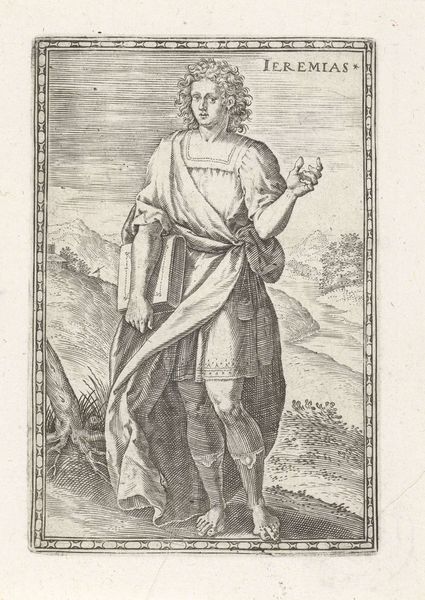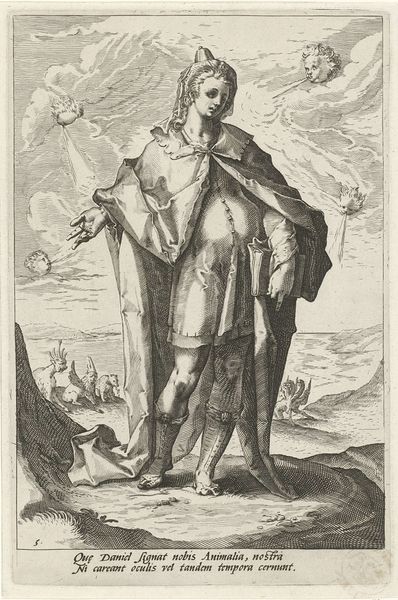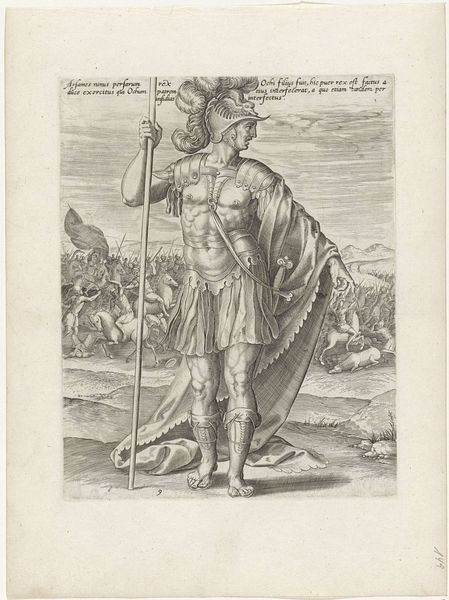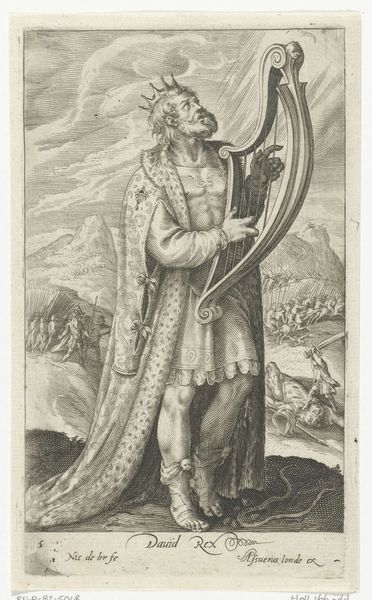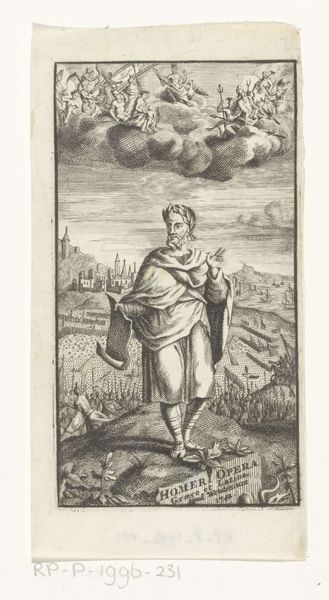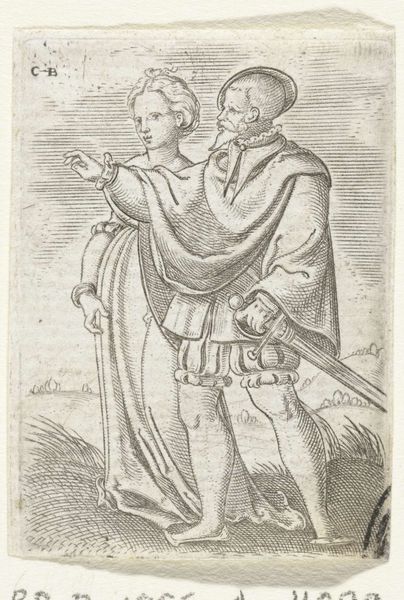
print, engraving
#
portrait
#
baroque
# print
#
old engraving style
#
pencil drawing
#
portrait drawing
#
history-painting
#
northern-renaissance
#
engraving
Dimensions: height 191 mm, width 112 mm
Copyright: Rijks Museum: Open Domain
Curator: So, we're looking at "Jozua als legeraanvoerder met vaandel en zwaard"—that translates to Joshua as army commander with banner and sword. It’s an engraving, dating from somewhere between 1581 and 1656, by Nicolaes de Bruyn. Editor: It has the weightiness you'd expect, but that billowing flag—it's like a tangible sense of power, of something monumental about to happen. Even in print, I find myself strangely moved. Curator: Well, that tension between the earthbound and the aspirational seems key here. De Bruyn made this engraving during a time of significant socio-political change and upheaval, reflecting perhaps, on the role of leadership and divine guidance in a world grappling with conflict. The image itself takes on an interesting quality within this specific Northern Renaissance lens. Editor: The face too! He isn’t idealized, yet the portrait carries nobility. A touch weathered. Seen a few things. Also I can't help but notice he's sporting some truly bizarre ankle ornaments – what’s going on there? Curator: Those little figurines around his ankles reflect classical motifs appropriated in the Renaissance. His slightly bare legs—are interesting too; this work shows an early modern, somewhat fantastical, understanding of classical dress in this period. We must also remember that prints, like this one, played a crucial role in disseminating ideas and imagery in the 16th and 17th centuries. Joshua, as a leader chosen by God, could function here as propaganda or be used to justify and frame local political conflicts as divinely ordained battles. Editor: It makes you consider the burden of representation in every sense. Chosen or imposed upon… It makes me feel something new for poor old Joshua; less victorious and more solemnly dutiful. A man stuck on a banner! Curator: And with that consideration we recognize the nuance this artist presents! Perhaps by stripping down classical imagery of its perceived authority it creates an opportunity to really *see* the man portrayed here. Editor: Right. A flawed sort of demigod just might allow you, the viewer, to see more of your earthly self within his narrative.
Comments
No comments
Be the first to comment and join the conversation on the ultimate creative platform.


